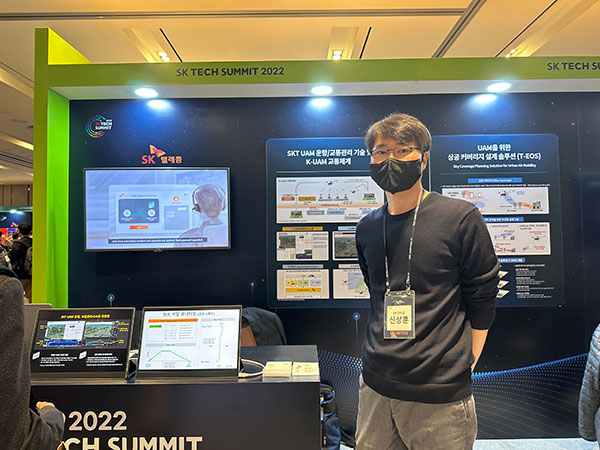SKT 신상훈 UAM 팀 리더는 지난 8, 9일 양일간 서울 광진구 워커힐 호텔에서 '2022 SK 테크 서밋(TECH SUMMIT)'에서 UAM 운항 교통관리 시스템의 특장점에 대해 설명했다.
▲SKT 신상훈 UAM 팀 리더
‘SK 테크 서밋’서 UAM 운용 관리 시스템 소개
3D 맵 구성·시간 정보 확보·충돌 관리 등 지원
“UAM의 안전하고, 효율적인 운용을 위해 저고도 도심지 비행 안전성 확보가 필요합니다”
SKT 신상훈 UAM 팀 리더는 지난 8, 9일 양일간 서울 광진구 워커힐 호텔에서 '2022 SK 테크 서밋(TECH SUMMIT)'에서 UAM 운항 교통관리 시스템의 특장점에 대해 설명하며, 위와 같이 말했다.
UAM 교통관리 시스템은 여러 운항사들이 운용하는 항공기들을 교통 관제할 수 있는 체계다. 예컨대 기존 대한항공 같은 항공사들이 운항할 수 있는 시스템들을 뜻한다.
신 리더는 “UAM은 기존 항공 체계와 다르게 도심지 상공 300m ~ 600m 사이에 운행이 되므로, 안전성 확보를 위해 고도 정보가 중요하다”고 주장했다.
이어 SKT의 UAM 운항관리 시스템은 비행계획 및 운항 모니터링을 1개 운항 관리 시스템으로 통합하고, 비행 정보 입력 간소화를 지원하며, 비행 계획을 사전에 검증할 수 있어 운용 효율성과 편의성을 증대했다며 기존 항공 시스템은 보통 2D로 관제하는 것과 다르게 SKT는 3D로 맵을 구성하고, 시간 정보를 더해 정시성 확보 및 충돌 관리가 가능하다고 밝혔다.
신 리더는 “항로를 이탈하면 자동 모니터링을 통해 알림을 송신하는 등 AI 기반 사전 방지를 통해 안전한 저고도 도심지 운용을 지원할 수 있다”며 “이외에 지형, 기상, 소음 및 전파 물질 정보를 제공하는 운항지원정보 시스템(SDSS)을 기체, 버티포트 등과 공유할 수 있다”고 언급했다.
한편 이번 행사는 코로나19 이후 첫 오프라인 중심으로 진행된 행사로, SK그룹 17개사가 참여해 AI, 반도체, 클라우드, 보안 등 총 10개 분야 127개 기술을 선보였다.
